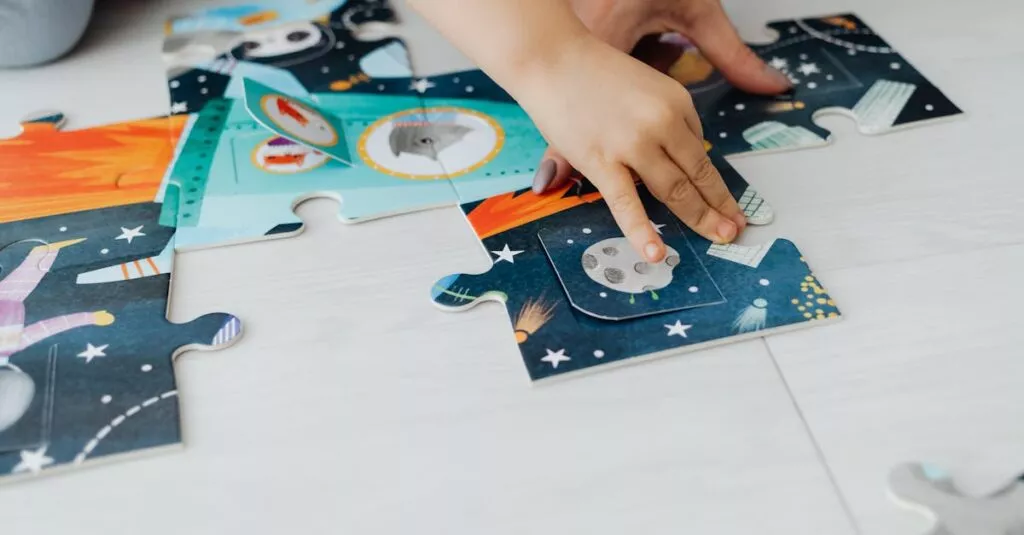AI Sparks Curiosity in Kids
Kids are naturally curious. Introducing AI can spark their interest in how things work. Think about the first time your child asked why the sky is blue. Now, imagine them asking how Siri understands their voice. This curiosity can lead to deeper learning.
When kids study AI, they often want to know not just how it works, but why it works. This can lead to exciting discoveries. Parents might fear that understanding AI requires a PhD, but simple, hands-on projects can be very engaging. You can show them simple coding exercises or use AI-powered toys. The journey of learning AI can be a shared adventure and a lot of fun.
Learning AI Develops Problem-Solving Skills
Learning AI isn’t just about coding or complex algorithms. It’s a great way to hone problem-solving skills. AI involves breaking down big problems into smaller, manageable tasks. Imagine teaching your child to build a basic AI program that can sort their toys. They’ll need to think about categories, rules, and processes. This helps them learn to tackle big problems in steps. Parents can observe not only their child’s growing understanding of AI but also their enhanced ability to approach everyday challenges. This aspect of AI education can build resilience and critical thinking. Plus, it’s a great way to bond over brain-stretching activities.

AI Can Be a Fun Family Activity
Including AI in family activities might sound like science fiction, but it’s quite accessible now. Family-friendly AI kits and online platforms let you experience AI together.
Picture a Saturday afternoon where you and your child build a simple AI-powered robot. The laughter and excitement make learning fun and memorable. Sharing these experiences can bring families closer, creating new traditions around tech exploration.
Plus, for those competitive spirits, family coding competitions can become a regular event. The collaborative efforts foster teamwork and create cherished memories. Suddenly, AI becomes a bridge between generations.

Early AI Education Prepares Kids for Future Jobs
In our rapidly evolving world, many of the jobs our kids will have don’t even exist yet. Introducing AI early prepares kids for these future opportunities. Understanding AI gives them a head start on the skills that will be in high demand. Schools may not always keep pace with tech advancements, but parents can fill that gap. Encourage exploration of AI and related fields. This preparation can reduce future career anxiety. Imagine your child talking confidently about neural networks at their high school presentation. They’ll be ahead of the curve. Early education in AI is like teaching kids to ride a bike before it’s a necessary skill for commuting.

By exposing children to AI education at an early age, parents can help them develop essential skills for the future job market, ensuring they are well-equipped for the upcoming technological landscape.
Overcoming Fears of Technology
Technology can be intimidating. Yet, helping your child embrace AI can ease these fears. It’s common to worry about screen time and tech addiction. Balancing these concerns with the benefits of AI education is crucial.
Discussing worries openly with kids can demystify AI and make it less scary. Kids might worry they’ll fail or find AI too hard. Parents should provide encouragement and reassure them that failure is part of learning. By starting with simple projects, you can build confidence.
It’s like learning to swim; small steps lead to big leaps. Plus, parents can also learn along the way, turning a potential fear into a bond-boosting experience.

Balancing AI and Traditional Learning
There’s no one-size-fits-all in education, and mixing traditional learning with AI can be powerful. Storybooks and outdoor play are as vital as coding classes. Balance is key. For instance, weaving AI into a science project can make it more exciting without overshadowing the fun of building volcanoes. Blending AI learning with traditional methods can enhance creativity. Instead of just reading about ecology, kids can use AI to predict weather patterns for their study garden. This combination keeps learning dynamic and engaging. Encouraging both types of learning can help kids develop a well-rounded educational foundation, crucial for both their academic and personal lives.

How to Get Started with AI at Home
Starting with AI at home doesn’t require a high budget or advanced skills. Plenty of resources are available to kick-start your journey. Websites like Code.org or Scratch.mit.edu provide beginner-friendly platforms.
Look for AI kits designed for kids; they usually come with helpful guides. Plan family AI nights once a week. These can include watching documentary films on AI, discussing the good and bad impacts, or creating simple AI projects.
Begin with fun, short tasks to prevent overwhelming your child. The aim is to keep them curious and excited. Remember, the goal is to learn together and enjoy the process without pressure.

Explore the world of AI with your family and dive into the exciting field of artificial intelligence!
